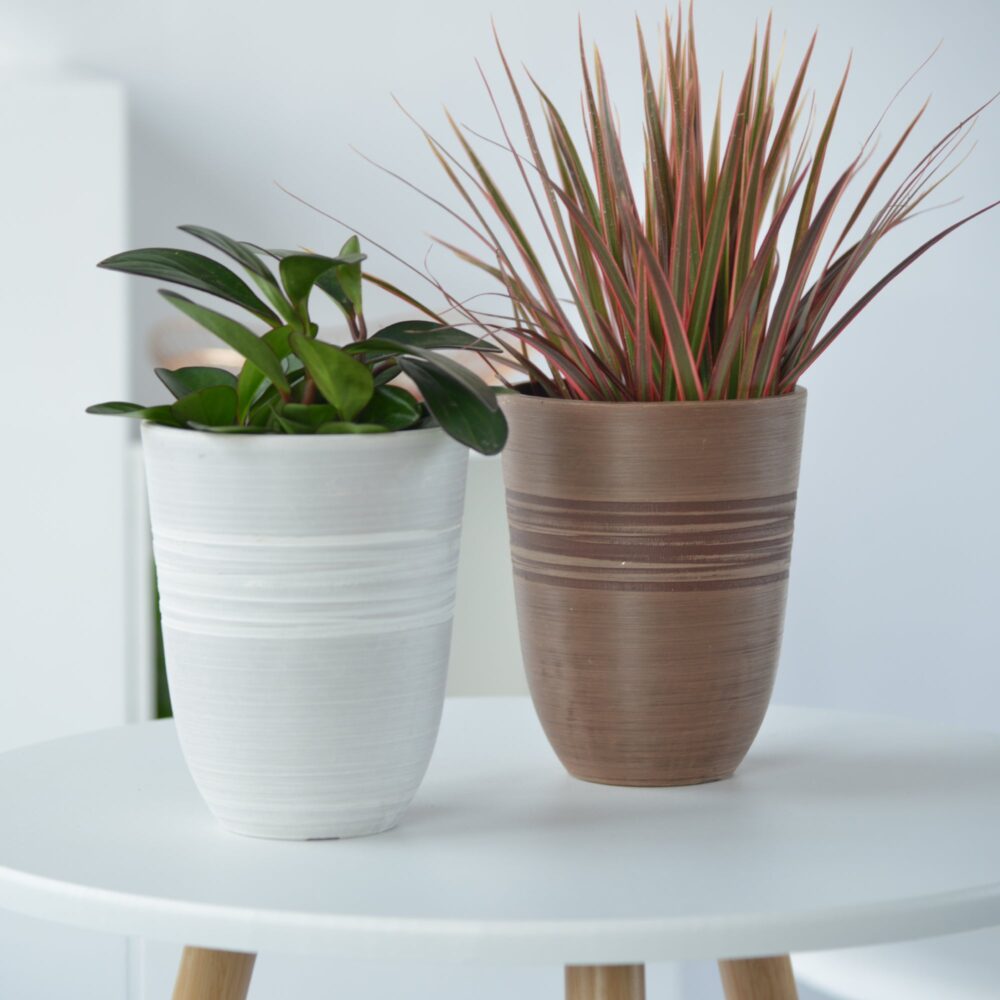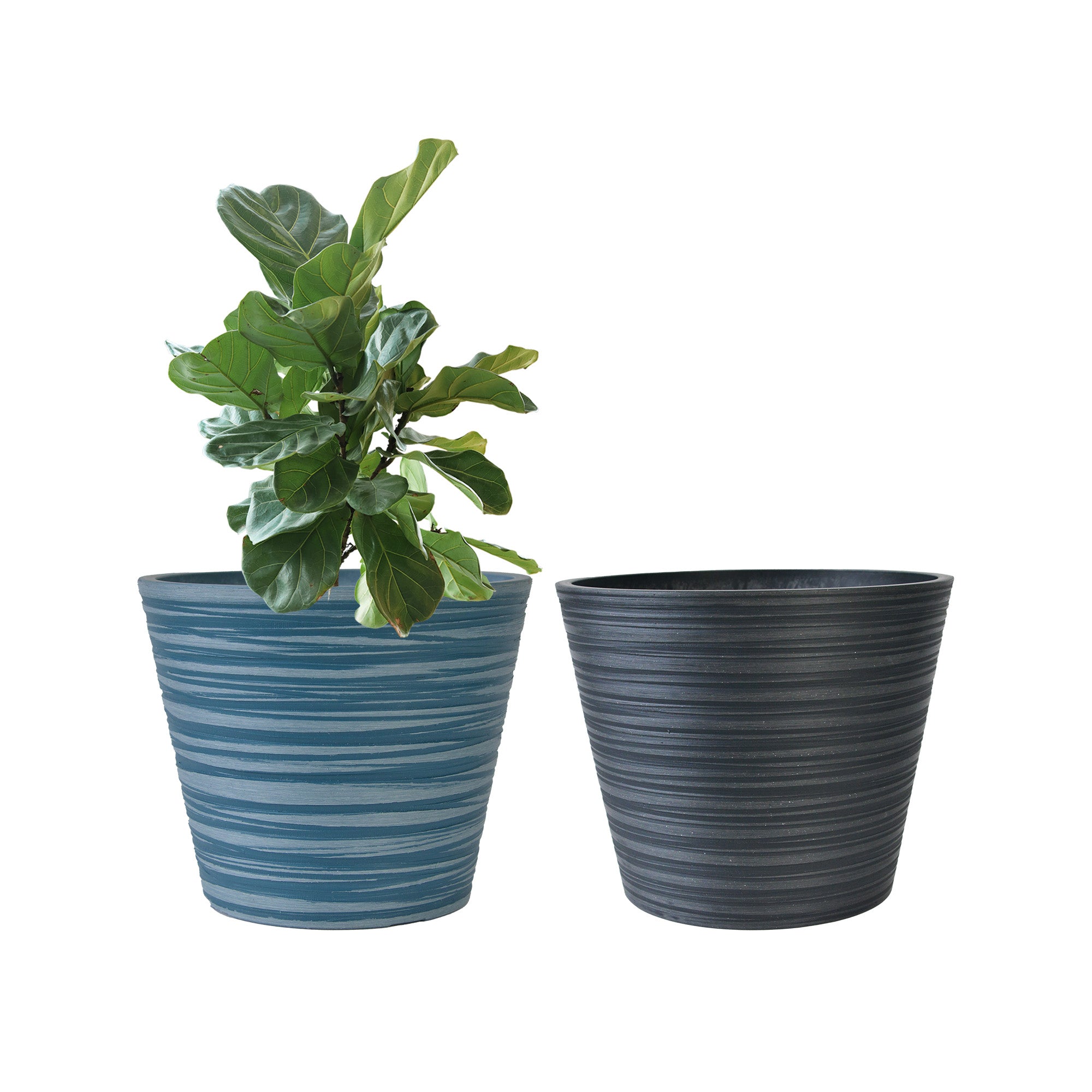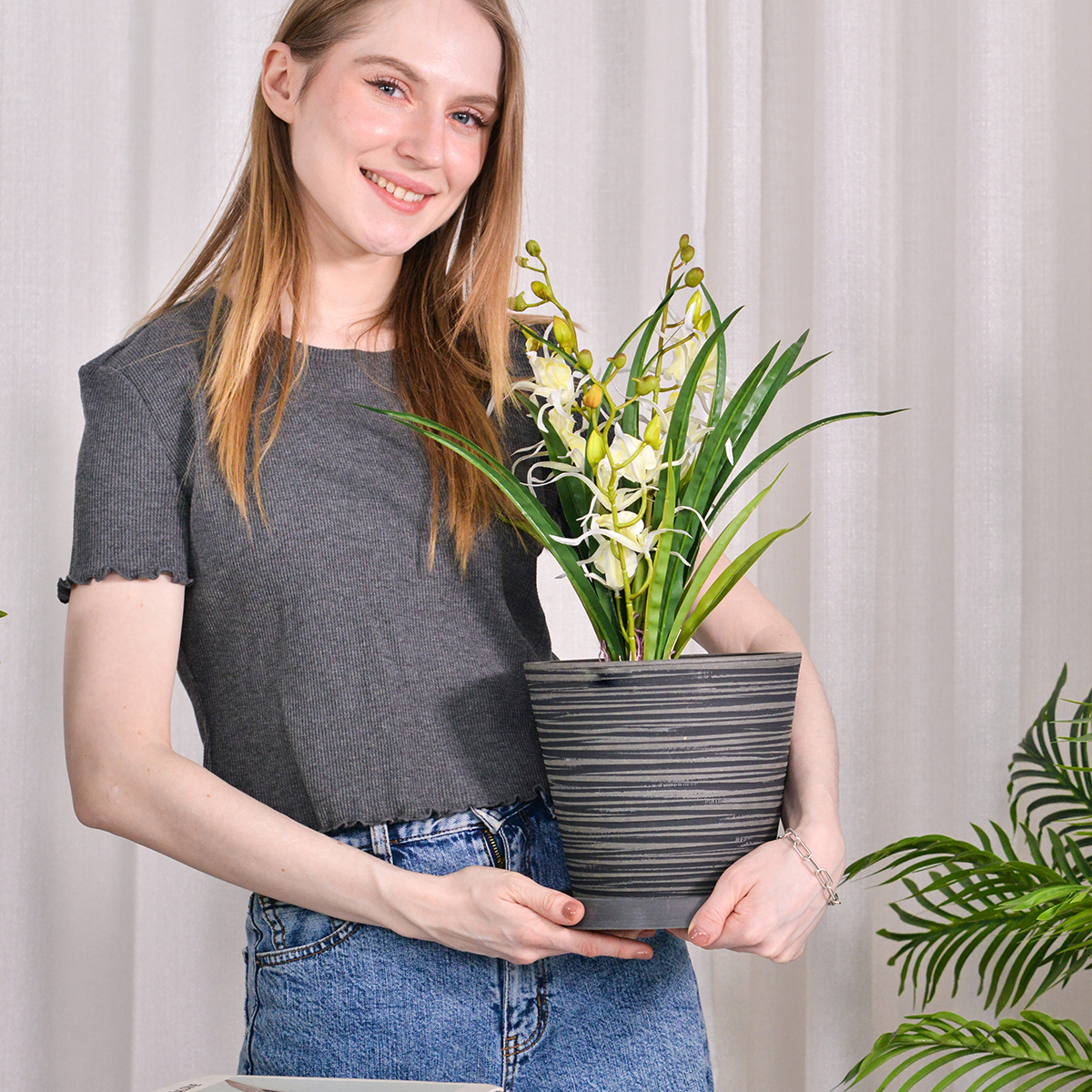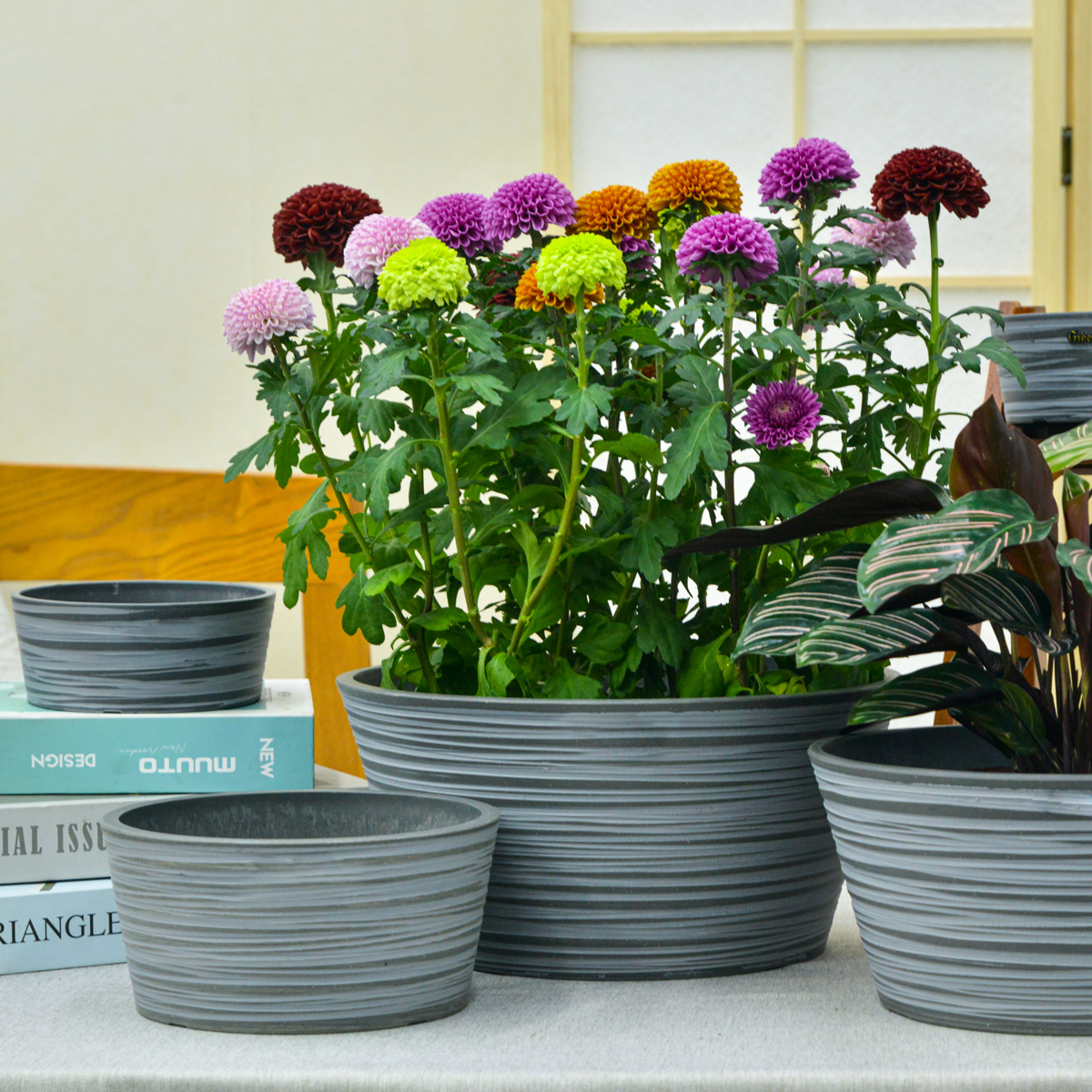Foxtail Grass in Pots: The Complete Guide to Growing Ornamental Millet Outdoors in Containers (Easy & Elegant!)
Want to add texture, movement, and a touch of wild elegance to your patio, balcony, or garden? Growing foxtail grass(specifically ornamental millet, Setaria italica) in containers is a wonderfully easy and stylish way to incorporate these graceful grasses into your outdoor spaces. Celebrated for their attractive seed heads resembling foxtails, their upright habit, their low-maintenance nature, and their adaptability to container gardening, ornamental millet (often called foxtail grass in gardening contexts) is perfect for adding vertical interest and a soft, natural feel to your outdoor living areas. This comprehensive guide will provide you with everything you need to know to grow foxtail grass successfully in outdoor pots, from selecting the best varieties and containers to mastering essential care techniques for a beautiful and long-lasting display.
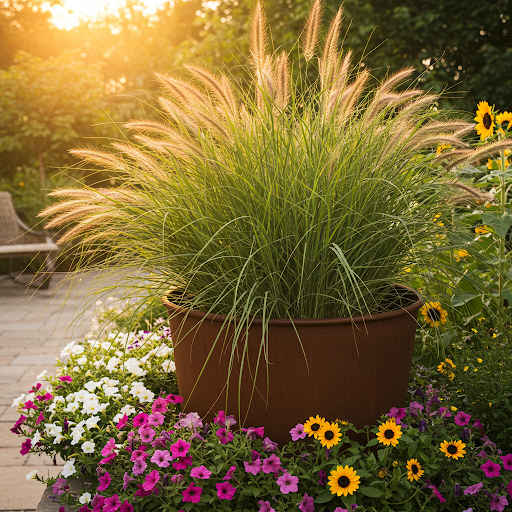
foxtail grass
What is Foxtail Grass (Ornamental Millet)?
Foxtail grass in gardening, when referring to ornamental plants, typically refers to varieties of ornamental millet, scientifically known as Setaria italica. While true “foxtail grasses” (genus Alopecurus) exist, ornamental millet is more commonly cultivated for its striking resemblance to foxtails and its ornamental qualities. Setaria italica is an annual grass in the Poaceae family, originally cultivated for grain but now also prized for its decorative seed heads, upright, clumping habit, and ease of growth. Ornamental millet plants are characterized by their upright, grassy foliage, long, arching leaves, and distinctive, dense, cylindrical seed heads that resemble the bushy tail of a fox, hence the common name “foxtail grass”. They exhibit a clumping, upright growth habit, typically reaching heights of 2-5 feet tall and 1-2 feet wide, depending on the variety and growing conditions. They are known for their attractive seed heads in various colors (green, bronze, purple, cream), textural foliage, movement in the breeze, low-maintenance nature, and versatility in garden designs, making them a popular choice for adding height, texture, and a naturalistic touch to gardens and containers, especially for late-season interest.
Is Foxtail Grass (Ornamental Millet) Good for Outdoor Pots?
Yes, ornamental millet (foxtail grass) is exceptionally well-suited for outdoor pots and container gardening, and is increasingly popular for adding vertical accents and textural interest to container arrangements. Its upright habit, manageable size (especially with careful variety selection), striking seed heads, and adaptability to pot culture make it ideal for container gardens. Growing foxtail grass in pots offers several advantages:
- Vertical Interest: Foxtail grass adds height and vertical structure to container gardens, creating focal points and visual layers in mixed plantings.
- Portability: Potted foxtail grass can be easily moved to optimal locations for sunlight, display, or to create seasonal arrangements. You can move them to highlight specific areas of your patio or garden as needed.
- Controlled Environment: Container gardening allows you to provide the well-draining soil mix that foxtail grass prefers and control watering more precisely.
- Design Versatility: Foxtail grass works beautifully as a thriller (centerpiece) plant in mixed containers, or as a standalone specimen in a pot, adding drama and texture.
- Pest and Disease Management: Container growing can help reduce some soilborne pest and disease issues that can affect foxtail grass in the ground.
- Ideal for Small Spaces: Foxtail grass in pots is perfect for patios, balconies, and small gardens where ground space may be limited, but you want to incorporate taller, textural plants.
Ideal Growing Conditions for Foxtail Grass (Ornamental Millet) in Pots:
Types of Foxtail Grass (Ornamental Millet) for Pots: Several ornamental millet varieties are excellent for containers. Consider these factors when choosing:
- Dwarf or Compact Varieties: Look for varieties specifically described as “dwarf” or “compact” for containers, as they will be more manageable in pots and less likely to become top-heavy. Examples include ‘Purple Majesty’ (though tall, can be managed in large pots), ‘Jade Princess’ (compact green), ‘Pearl Millet’ (various dwarf cultivars). Dwarf varieties are better suited to smaller pots and tighter spaces.
- Color of Seed Heads and Foliage: Ornamental millet comes in a range of colors for both foliage and seed heads, including greens, purples, bronzes, creams, and variegated forms. Choose colors that complement your overall container garden design and desired aesthetic. Purple and bronze varieties offer dramatic color, while green and cream varieties provide a more subtle, natural look.
- Height: Consider the mature height of the variety when choosing pot size and placement. Taller varieties will need larger, more stable pots and may be best placed in locations sheltered from strong winds. Dwarf varieties are more versatile for smaller pots and exposed locations.
- Texture: Some varieties have finer, more delicate foliage, while others have broader, bolder leaves. Choose textures that complement other plants in your container arrangements and create visual interest.
Light: Foxtail grass thrives in full sun. It needs at least 6-8 hours of direct sunlight per day to develop strong stems, vibrant foliage color, and well-formed seed heads. Choose a sunny location for your foxtail grass containers, such as a south-facing patio, balcony, or garden roof. In partial shade, foxtail grass stems may become weak and floppy, foliage color may be less intense, and seed head production may be reduced. Full sun is crucial for robust growth and best color.
Soil: Foxtail grass prefers well-draining soil that is moderately fertile. Use a high-quality general-purpose potting mix. Amend potting mix with perlite, coarse sand, or grit to improve drainage and aeration, which is important in containers. While ornamental millet is not overly fussy about soil type, good drainage is essential to prevent root rot, especially in pots. Avoid heavy, waterlogged soil. A slightly acidic to neutral pH (around 6.0-7.0) is ideal.
Watering: Foxtail grass is relatively drought-tolerant once established, but it performs best with consistent moisture, especially when grown in pots. Water thoroughly after planting to settle the soil. Water again when the top inch of soil feels slightly dry during the growing season, especially during hot and dry periods. Water deeply until water drains out of the drainage holes. Avoid overwatering and soggy soil, but also avoid letting the soil dry out completely, especially during hot spells. Container-grown plants will dry out faster than those in the ground, so monitor soil moisture regularly. Reduce watering slightly in late summer as seed heads mature and the plant begins to naturally dry for the end of its annual life cycle.
Temperature: Foxtail grass is a warm-season annual grass and thrives in warm temperatures. Ideal temperatures during its growing season are generally between 65-90°F (18-32°C). It is not frost-hardy and is typically grown as an annual in most climates. In Singapore’s climate, temperatures are generally ideal for foxtail grass year-round. Foxtail grass is well-suited to warm climates and tolerates heat well.
Fertilizer: Foxtail grass is not a heavy feeder and generally does not require heavy fertilization, especially when grown in pots with good quality potting mix. Over-fertilizing can actually promote excessive leafy growth at the expense of seed head production and can weaken stems. If desired, you can apply a light application of a balanced slow-release fertilizer (e.g., 10-10-10) at planting time, mixing it into the soil at the bottom of the pot, below the root zone, to avoid direct contact with the roots. Alternatively, you can apply a very dilute liquid fertilizer (half or quarter strength) once or twice early in the growing season, as plants are establishing. Avoid high-nitrogen fertilizers, which can promote floppy growth. In general, less fertilizer is better than too much for foxtail grass in pots.
Choosing the Right Pots for Foxtail Grass (Ornamental Millet):
Suitable Pot Types: Foxtail grass is versatile and can be grown in various pot types, as long as drainage is excellent and the pot is stable enough for taller varieties. Suitable pot types include:
- Terracotta Pots: Porous, allow good aeration and drainage, and aesthetically natural and earthy, complementing the grassy texture of foxtail grass. Terracotta is a good choice for foxtail grass as it helps prevent overwatering and provides good drainage. Consider larger, heavier terracotta pots for taller varieties to provide stability.
- Ceramic Pots: Glazed or unglazed ceramic pots can be used, offering a wide range of decorative styles. Ensure they have drainage holes and are sturdy enough for taller plants. Choose based on your desired aesthetic and stability needs.
- Plastic Pots: Lightweight, inexpensive, and available in various colors and styles. Plastic pots are practical for foxtail grass, especially for larger plantings, but be careful not to overwater as plastic retains moisture more than terracotta. Choose sturdy plastic pots, especially for taller varieties.
- Resin Pots: Lightweight, durable, available in styles mimicking terracotta or ceramic, and offer a balance of drainage and moisture retention. Resin pots are a good alternative to heavy ceramic or terracotta, and often more stable than plastic.
- Metal Containers: Metal planters can add a modern or industrial touch and are generally durable. Ensure good drainage and consider that metal can heat up in full sun, potentially drying out soil faster.
Drainage: Excellent drainage is absolutely essential for foxtail grass to prevent root rot. Ensure your chosen pot has drainage holes at the bottom. Avoid pots without drainage holes. Adding a layer of drainage material at the base of the pot (e.g., gravel, pot shards, clay pebbles) is often recommended to further improve drainage, especially for heavier potting mixes or if you tend to overwater. Elevating pots slightly on pot feet or bricks can also improve drainage and air circulation.
Pot Size: Choose pot sizes appropriate for the mature size of the foxtail grass variety and the desired display. Taller varieties will need larger, more stable pots.
- Small Pots (Dwarf Varieties, Single Plant): For very dwarf varieties or single plants of slightly taller but manageable types, use pots that are at least 8-10 inches in diameter and at least 10 inches deep.
- Medium Pots (Most Varieties, Multiple Plants or Mixed Containers): For most ornamental millet varieties and for planting multiple plants together or in mixed container arrangements, use pots that are 12-16 inches in diameter or larger and at least 12-16 inches deep.
- Large Pots or Patio Containers (Taller Varieties, Dramatic Displays): For taller varieties like ‘Purple Majesty’ or for creating a dramatic focal point, use large pots or patio containers that are 18 inches in diameter or larger and at least 18 inches deep. Larger, heavier pots are recommended for taller varieties to provide stability and prevent toppling, especially in windy conditions.
- Depth: Ensure the pot is deep enough to accommodate the root system and provide adequate drainage. Foxtail grass roots are moderately deep.
Stability: For taller foxtail grass varieties, stability is a key consideration to prevent pots from toppling over in wind or when plants reach mature height and become top-heavy with seed heads. Choose heavy pots made of terracotta, ceramic, or sturdy resin. Wider pots are generally more stable than tall, narrow pots. Consider placing heavier pots in sheltered locations or using plant supports if needed, especially for very tall varieties in exposed locations.
Color and Style: Choose pot colors and styles that complement the foliage and seed head colors of your foxtail grass and your outdoor décor, and enhance their natural, textural beauty. Earthy tones like terracotta, brown, beige, or muted greens can enhance the natural, grassy look of foxtail grass. Contrasting colors like dark blues, purples, or blacks can create a more modern and dramatic display, especially with lighter-colored seed head varieties. Metallic or galvanized metal containers can provide an industrial or contemporary style. Consider the overall style of your patio or garden and choose pots that harmonize with the surroundings and enhance the natural, textural, and elegant ambiance you wish to create.
Essential Care Tips for Thriving Foxtail Grass (Ornamental Millet) in Outdoor Pots:
- Watering: “Water When Topsoil Slightly Dry, Avoid Overwatering”. Water thoroughly after planting. Water again when the top inch of soil feels slightly dry during the growing season. Water deeply, ensuring good drainage. Avoid overwatering and soggy soil. Allow topsoil to dry slightly between waterings.
- Sunlight: Provide Full Sun (6-8+ Hours Daily) for Best Growth and Color. Place foxtail grass pots in a location that receives full sun during their growing season. Full sun is crucial for strong growth, vibrant foliage color, and well-developed seed heads.
- Fertilizing: Light Fertilizer at Planting (Optional), Minimal Feeding Needed. Fertilize sparingly, if at all. Light slow-release fertilizer at planting (optional), or very dilute liquid feed once or twice early in the season (optional). Avoid over-fertilizing.
- Deadheading (Not Necessary for Annual Millet): Deadheading spent flowers is not necessary for ornamental millet as it is grown for its seed heads, which are the ornamental feature. Allow seed heads to mature and dry on the plant for the best display.
- Winter Care (Annual – Replant Each Year): Foxtail grass (Setaria italica) is an annual plant. It completes its life cycle in one growing season and will not survive winter in most climates. In Singapore’s climate, it will also behave as an annual. After the growing season is over and the plant has finished its display (typically by late fall or early winter), you can remove and discard the entire plant. It will not regrow from the roots. Replant new seeds or seedlings each spring for a fresh display each year.
- Pest and Disease Control: Foxtail grass is generally pest and disease resistant. Monitor for common garden pests like aphids or spider mites, though they are rarely a serious problem. Good air circulation and proper watering practices help prevent most issues. If pests occur, use insecticidal soap or neem oil if needed. Diseases are rarely a problem if soil is well-draining and plants are not overcrowded.
Popular Foxtail Grass (Ornamental Millet) Cultivars for Pots (by Color and Height):
- Purple/Black Foliage & Seed Heads (Dramatic): ‘Purple Majesty’ (tall, deep purple foliage and dark purple seed heads), ‘Black Knight’ (tall, very dark purple/black foliage and seed heads), ‘Royal Jester’ (dark purple foliage, shorter than ‘Purple Majesty’).
- Green Foliage & Seed Heads (Natural Look): ‘Jade Princess’ (compact, bright green foliage and green seed heads), ‘Green Fountain’ (medium height, green foliage and seed heads).
- Bronze/Copper Tones (Warm Colors): ‘Copper Prince’ (bronze foliage and seed heads), ‘Bronze Baby’ (dwarf, bronze tones).
- Cream/Pale Seed Heads (Elegant): ‘Pearl Millet’ varieties (various dwarf cultivars with creamy white or pale seed heads).
- Variegated Foliage: ‘Tigrinum’ (green foliage with yellow stripes).
In Summary:
Growing foxtail grass (ornamental millet) in outdoor pots is a wonderfully easy and stylish way to add vertical interest, texture, and natural beauty to your patio, balcony, or garden. Their striking seed heads, upright habit, and low-maintenance nature make them a perfect choice for container gardeners of all levels, especially those seeking to add a touch of wild elegance to their outdoor spaces. By providing full sun, well-draining potting mix in pots with good drainage and stability, moderate watering, and minimal fertilization, you can easily cultivate thriving foxtail grass plants in pots and enjoy a long-lasting display of textural foliage and eye-catching seed heads throughout the growing season.
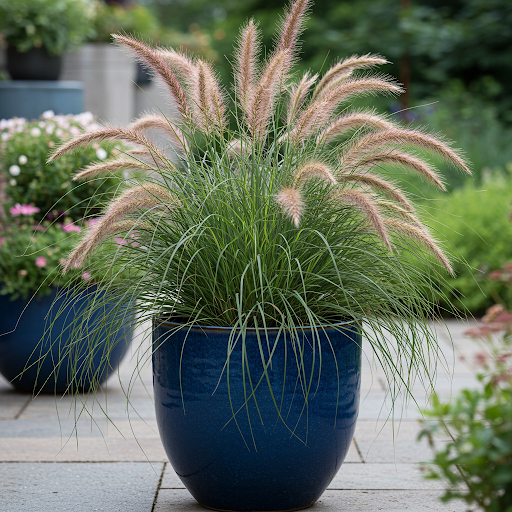
foxtail grass
For more detailed botanical information and to explore the diverse world of Setaria italica (ornamental millet), you can visit the Wikipedia page on Setaria italica.
Important Note: When choosing “foxtail grass” for your garden, ensure you are selecting ornamental millet (Setaria italica) varieties, which are annual and cultivated for their ornamental seed heads. Be mindful of true “foxtail grasses” (Alopecurus species), which can be weedy in some regions. Always consult with local gardening experts and nurseries for the most specific and regionally relevant advice on growing ornamental grasses in your area. Enjoy the graceful beauty and low-maintenance charm of foxtail grass in your outdoor containers!
Planter 6 in W / 8 in W / 12 in W Indoor or Outdoor Plants, Modern Decorative Plant Pots with Drainage Hole, Decorative Flower Pots
By greenship-seo|2025-02-06T13:43:53+00:00January 16, 2025|Categories: Hand-carving Series|Tags: Decorative Flower Pots|
Plant Pots 6 inch 8 inch 10 inch for Indoor Plants, Set of 3 Modern Decorative Planter ts with Drainage Hole, Decorative Flower Pots
By greenship-seo|2025-04-10T06:39:28+00:00January 14, 2025|Categories: Hand-carving Series|Tags: Decorative Flower Pots|
Planter 5 in W / 8 in W / 12 in W or Indoor Outdoor Plants, Modern Decorative Plant Pots with Drainage Hole, Decorative Flower Pots
By greenship-seo|2025-04-10T06:37:58+00:00January 16, 2025|Categories: Hand-carving Series|Tags: Decorative Flower Pots|
K2-11T
By greenship|2024-08-13T04:21:25+00:00August 13, 2024|Categories: Hand-carving Series|
KC3-14A
By greenship|2024-08-16T06:26:30+00:00August 16, 2024|Categories: Hand-carving Series|
11THD
By greenship|2024-08-13T02:52:20+00:00August 13, 2024|Categories: Hand-carving Series|


